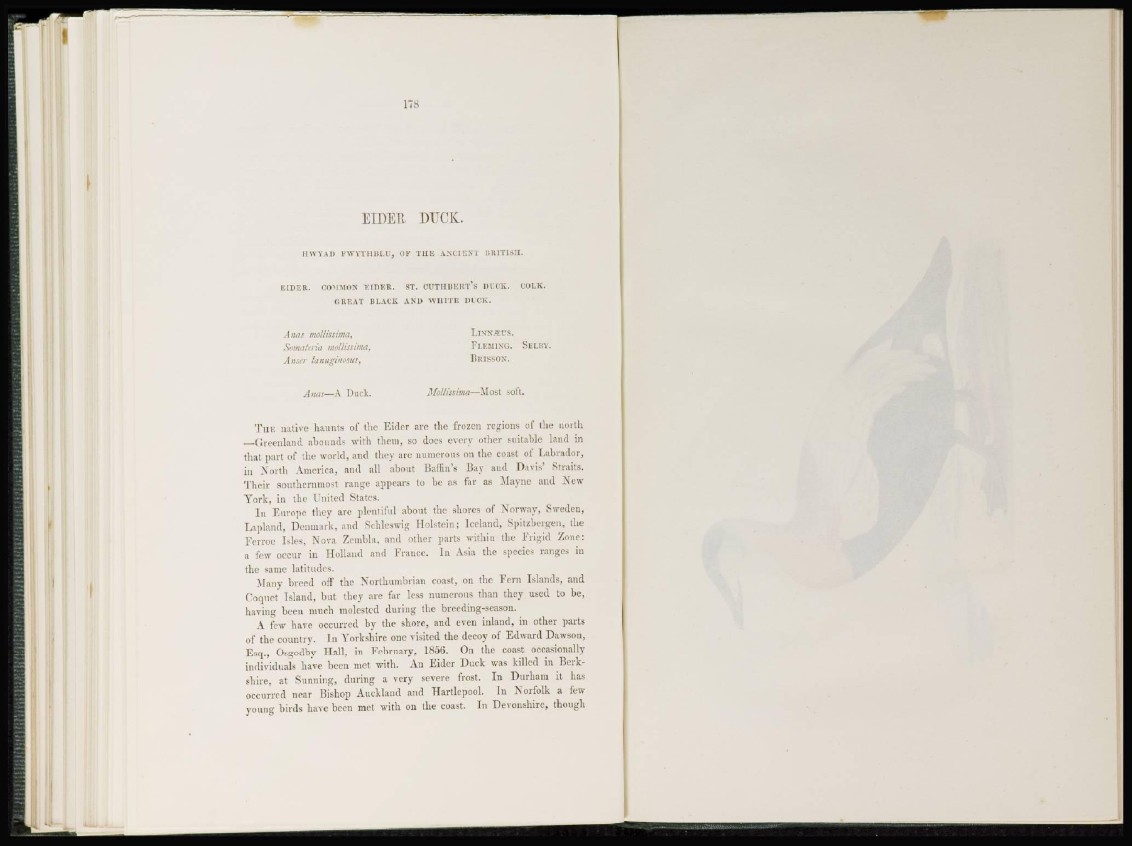
EIDER DUCK.
IIWYAD FWYTHBLU, OF l l i ! . AKCIBK1 BRITISH.
EIDER. COMMON EIDER. ST. CUTUBERT'S DICK. OOLX.
G UK AT BLACK AND WHITE DICK.
Anas moUissima, LlNNJECS.
Sumattiia m<y!lissiina, FLEMING. SELUV.
Atuer lanuginosus, BRTSSON.
Anas—A Duck. Moliissirna—Most soft.
THE native haunts of tin1 Eider are the frozen regions of the north
—Greenland abounds with them, so docs every other suitable land in
that part of the world, and they are numerous on the coast of Labrador,
in North America, and all about Baffin's Bay and Davis' Straits.
Their southernmost range appears to be as far as Mayne and New
York, in the United States.
I n Europe they are plentiful about the shores of Norway, Sweden,
Lapland, Denmark, and Schleswig Holstein; Iceland, Spitsbergen, the
Ferroe Isles, Nova Zembla, and other parts within the Frigid Zone:
a few occur in Holland and France. In Asia the species ranges in
the same latitudes.
Many breed off the Northumbrian coast, on the Fern Islands, and
Coquet Island, but they are far less numerous than they used to be,
haying been much molested during the breeding-season.
A few have occurred by the shore, and even inland, in other parts
of the country. In Yorkshire one visited the decoy of Edward Dawson,
Esq., Osgodby Hall, in February, 1856. On the coast occasionally
individuals have been met with. An Eider Duck was killed in Berkshire,
at Sunning, during a very severe frost. In Durham it has
occurred near Bishop Auckland and Hartlepool. Iu Norfolk a few
young birds have been met with on the coast. In Devonshire, though